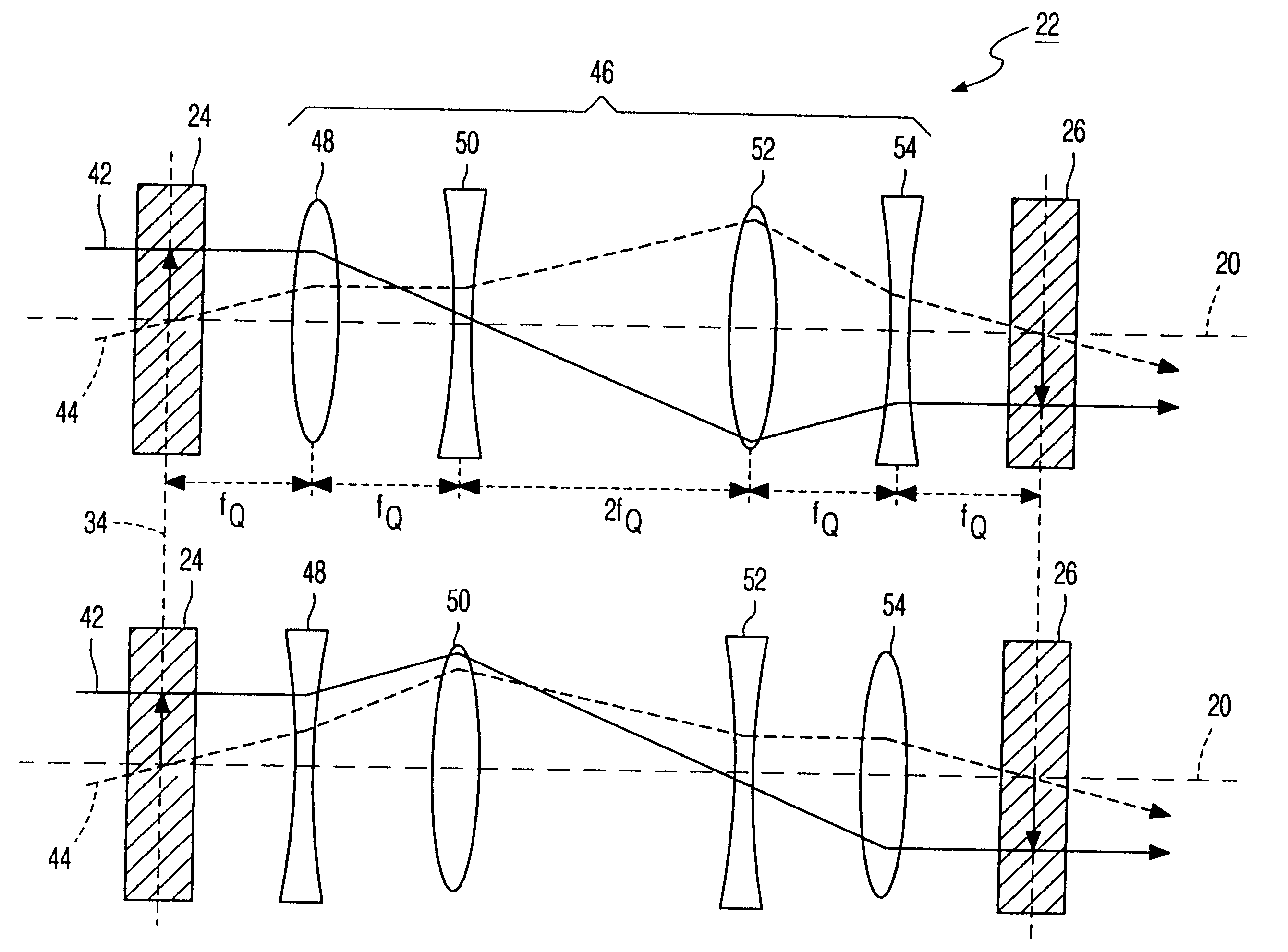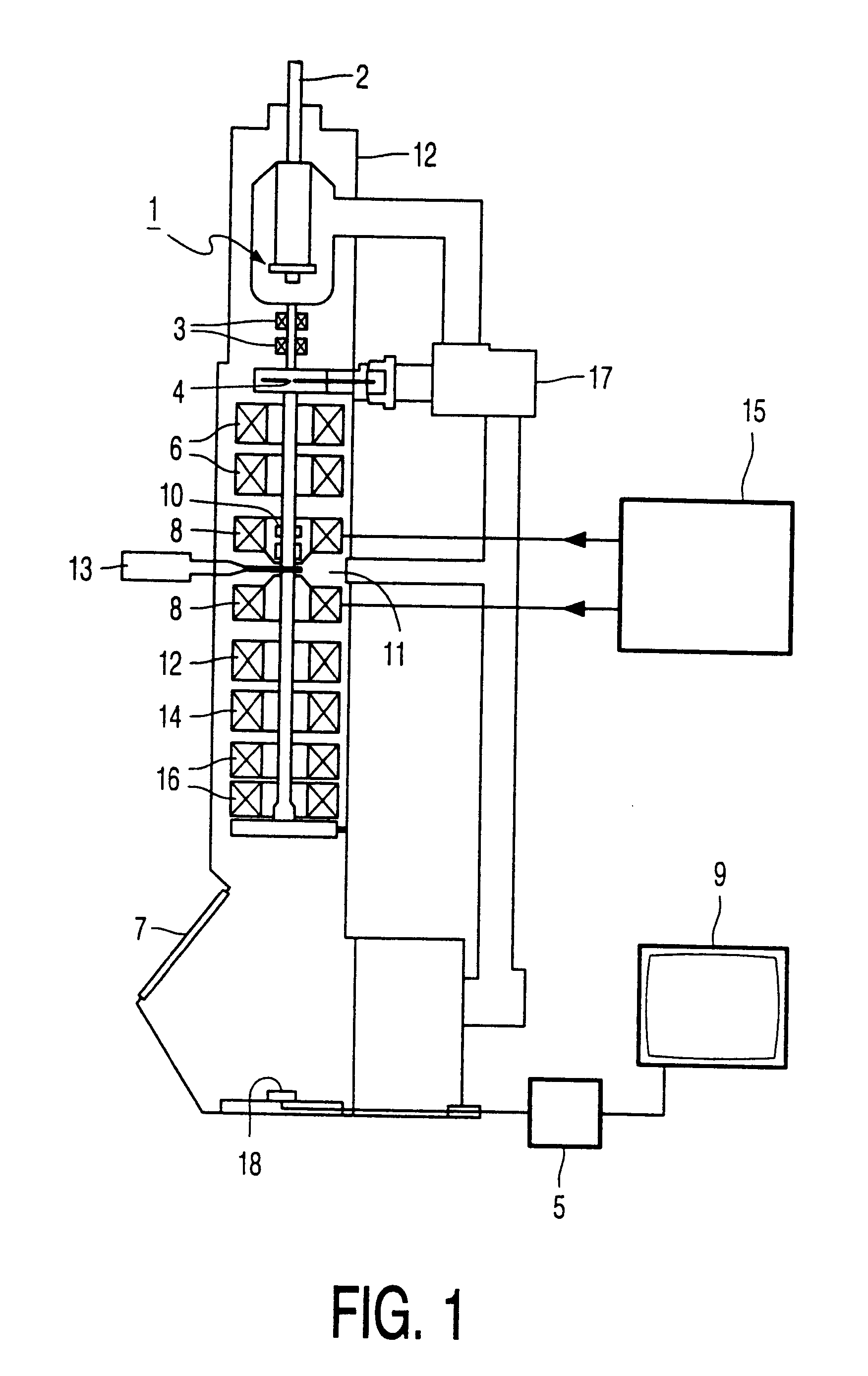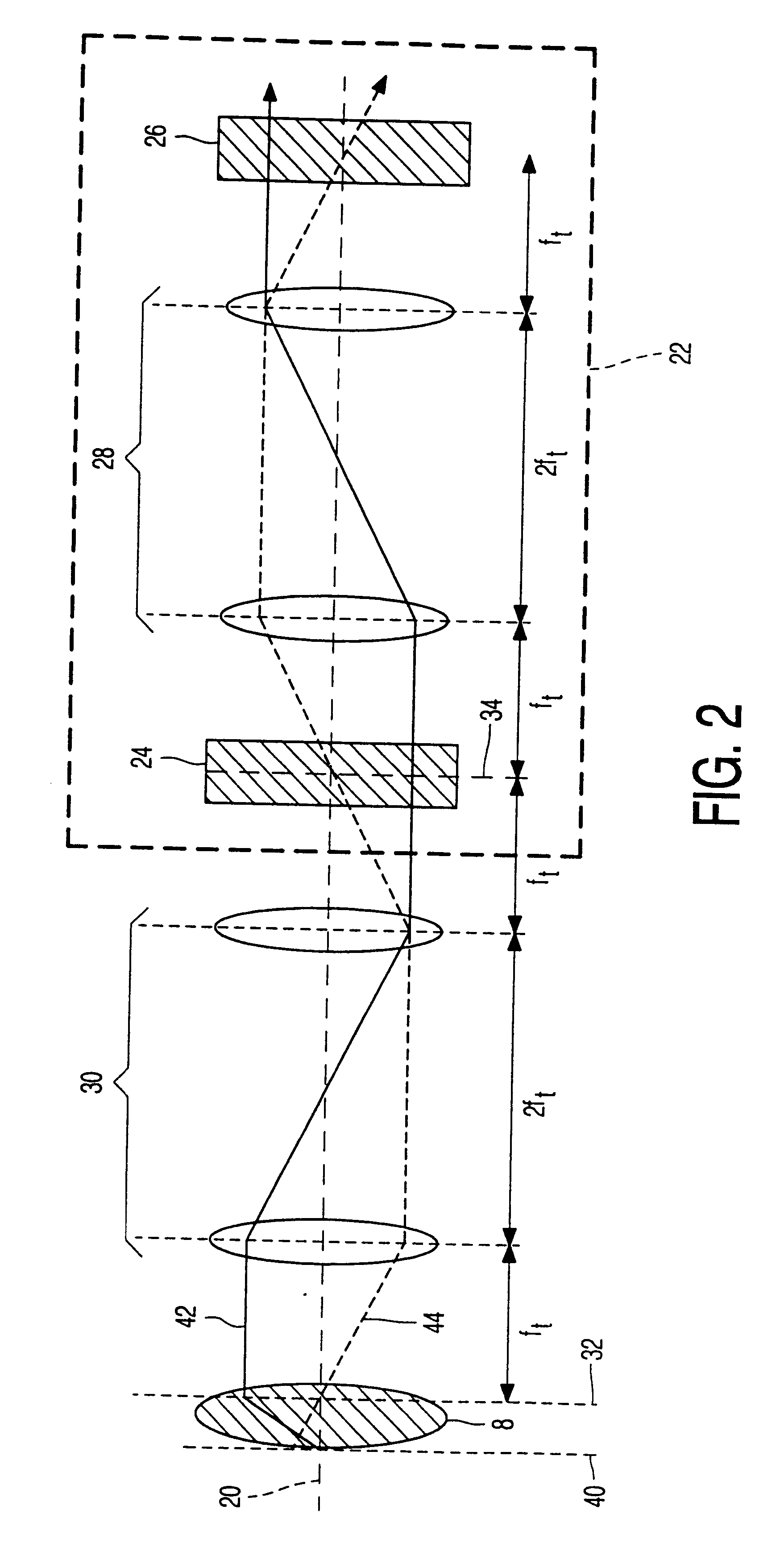Correction device for correcting the lens defects in particle-optical apparatus
- Summary
- Abstract
- Description
- Claims
- Application Information
AI Technical Summary
Benefits of technology
Problems solved by technology
Method used
Image
Examples
Embodiment Construction
FIG. 1 shows a particle-optical apparatus in the form of an electron microscope. The apparatus includes an electron source 1, a beam alignment system 3 and a beam diaphragm 4, a condenser lens 6, an objective lens 8, a beam scanning system 10, an object space 11 with a specimen holder 13, a diffraction lens 12, an intermediate lens 14, a projection lens 16 and an electron detector 18. The objective lens 8, the intermediate lens 14 and the projection lens 16 together constitute an imaging lens system. These elements are accommodated in a housing provided with an electric supply lead 2 for the electron source, a viewing window 7 and a vacuum pumping device 17. The energizing coils for the objective lens 8 are connected to a control unit 15 which is arranged to control the energizing of the imaging lens system. The electron microscope also includes a recording unit with the electron detector 18, an image processing unit 5 and a video display 9 for observing the images formed.
FIG. 2 sho...
PUM
 Login to View More
Login to View More Abstract
Description
Claims
Application Information
 Login to View More
Login to View More - R&D
- Intellectual Property
- Life Sciences
- Materials
- Tech Scout
- Unparalleled Data Quality
- Higher Quality Content
- 60% Fewer Hallucinations
Browse by: Latest US Patents, China's latest patents, Technical Efficacy Thesaurus, Application Domain, Technology Topic, Popular Technical Reports.
© 2025 PatSnap. All rights reserved.Legal|Privacy policy|Modern Slavery Act Transparency Statement|Sitemap|About US| Contact US: help@patsnap.com



